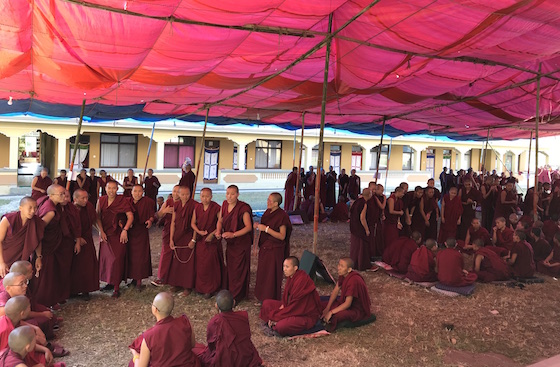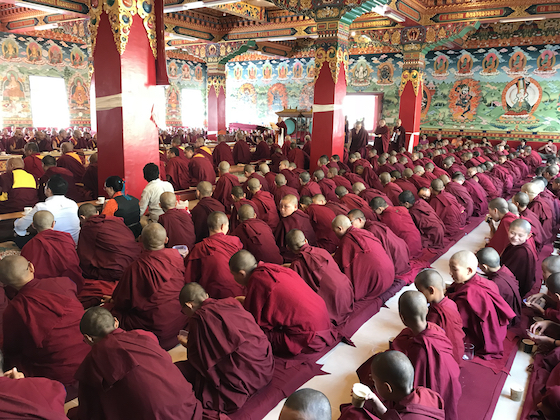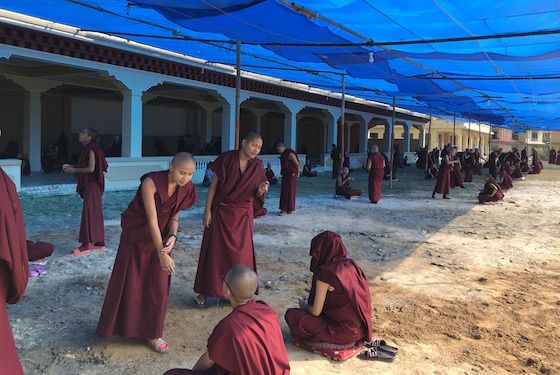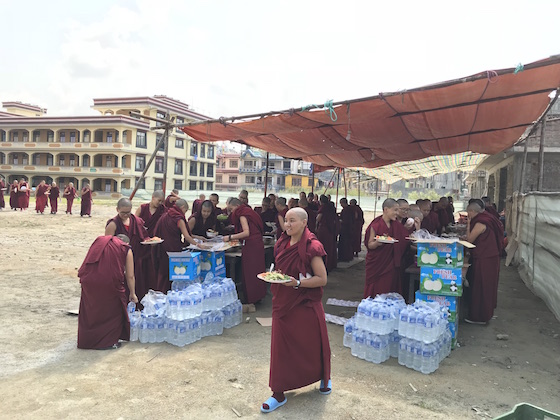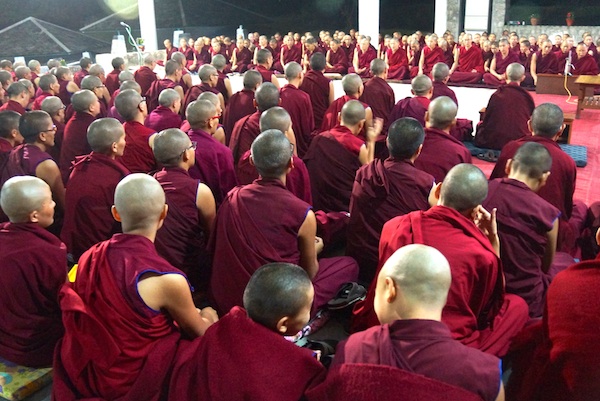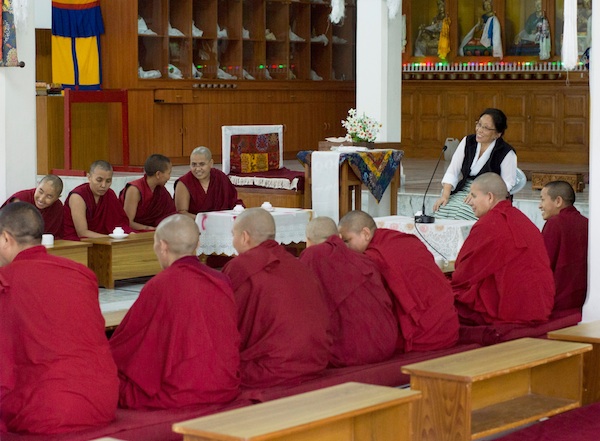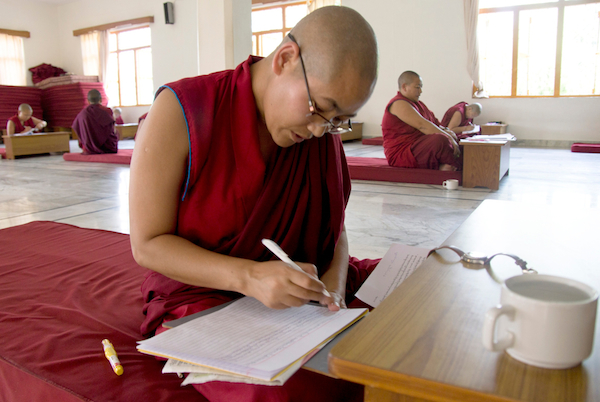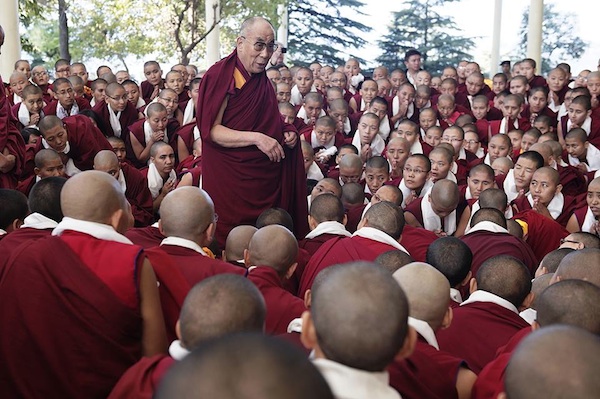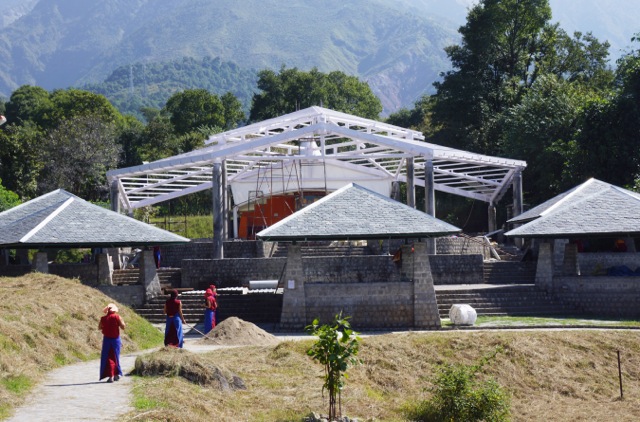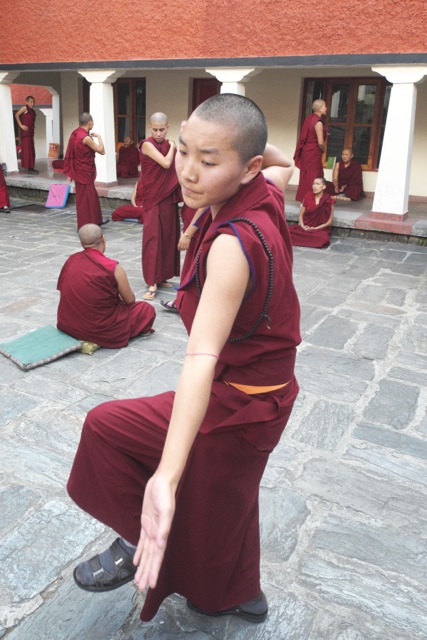In the remote Spiti Valley of Himachal Pradesh in northern India, lies Sherab Choeling Nunnery, currently home to about 65 Tibetan Buddhist nuns. Many of the nuns are sponsored by Tibetan Nuns Project donors.
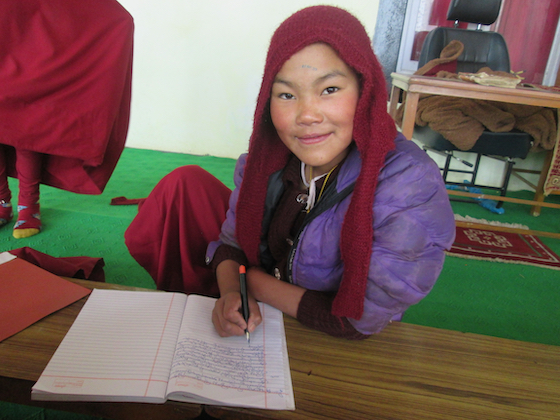
Many young girls seek admission to Sherab Choeling, but due to lack of facilities and sponsors, it is not possible for all to gain entrance. The Tibetan Nuns Project helps by raising awareness, finding sponsors for the nuns, and helping them to fundraise for the further development of the institute.
We just received lots of photos showing daily life at Sherab Choeling Nunnery that we wanted to share with the sponsors of the nuns and with Tibetan Nuns Project donors worldwide.
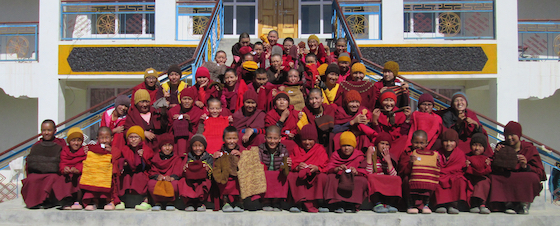
The nuns after their annual result ceremony. Many of the nuns are holding sweaters, vests, and hats knitted and donated by Wool-Aid.
The nunnery was founded in 1995 with the goal to educate Himalayan Buddhist nuns who would otherwise have no opportunity to receive any formal schooling or spiritual education. It is a non-sectarian nunnery that recognizes the beauty and value in all Buddhist traditions.
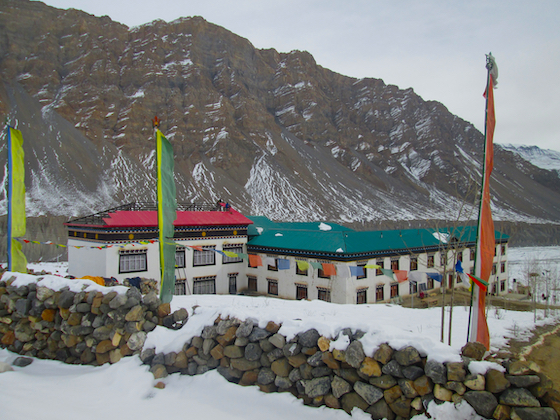
The nunnery is very secluded and lies in the village of Morang (between Manali and Tabor) at 4,000 meters altitude. The nuns have difficult living conditions. They often face long harsh winters and heavy snowfalls.
The nunnery was built in 1995 by 20 nuns and their teacher and was consecrated that year by His Holiness the Dalai Lama. There is the main building, a prayer hall, a classroom, an office, a kitchen, and a storeroom.
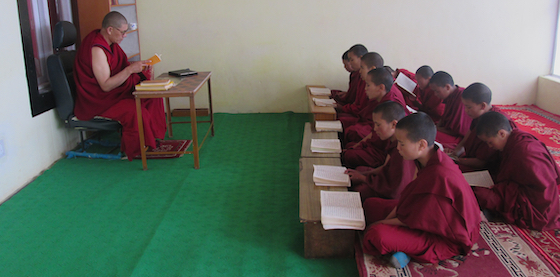
Traditionally women and girls in this region have suffered from many social and educational disadvantages. Many have been deprived of any kind of education. Sherab Choeling Nunnery was the first religious educational project for Spiti women, providing women and girls with the opportunity to overcome these obstacles.
Typically, women who live in remote areas like Spiti and who are interested in studying or practicing their religion have very few options. The Tibetan Nuns Project was approached by the nunnery in 2006 to help them develop their institution and the nunnery was accepted into our sponsorship program.
The nuns at Sherab Choeling follow a 17-year study program. The curriculum is designed to educate the nuns in Buddhist philosophy, meditation, Tibetan language, and literature, in addition to basic education in English, Hindi, and math. The broad education is intended to provide the nuns with the necessary skills to educate future generations of nuns and the communities from which they come.
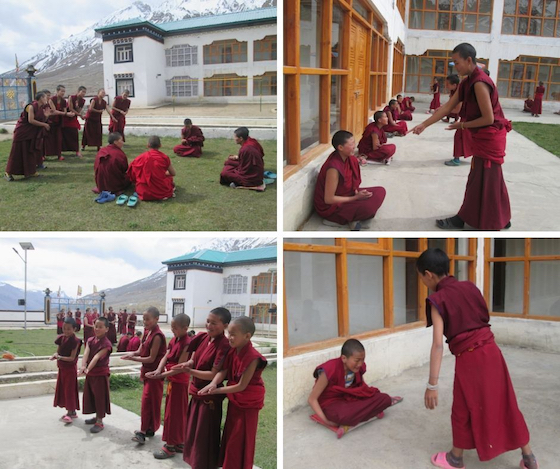
The nuns practice Tibetan Buddhist debate. Training in Tibetan Buddhist debate is an essential part of monastic education in the Tibetan tradition. Until recently, Tibetan nuns did not have the opportunity to fully study and practice Tibetan Buddhist debate, a process that joins logical thinking with a deeper understanding of Buddhist philosophy.
Although the area of Lahaul-Spiti is part of India, ethnically, the people are descended from Tibetans and the majority are devout Buddhists. They have preserved an ancient Tibetan culture, speaking an old dialect of the Tibetan language, as written in Tibetan scriptures.
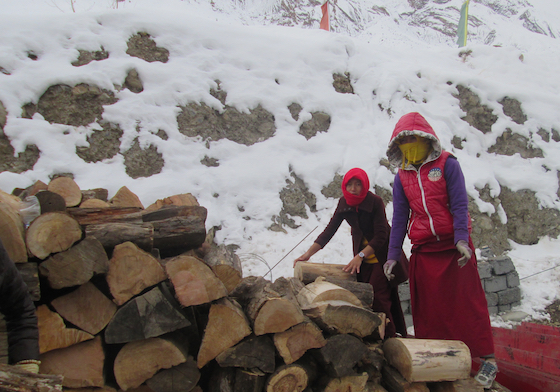
During the coldest months, the nuns hold their classes, prayers, and meetings in the kitchen because it is warmer and helps to save wood.
The nuns have difficult living conditions. They often face long harsh winters and heavy snowfalls. During winter the region is cut off from neighboring villages so the nuns must stock up their daily supplies well before the onset of cold weather.
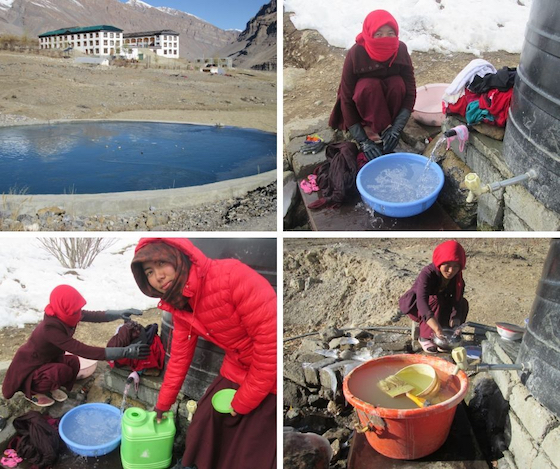
The frozen reservoir. Washing clothes and dishes in freezing-cold water is a challenge.
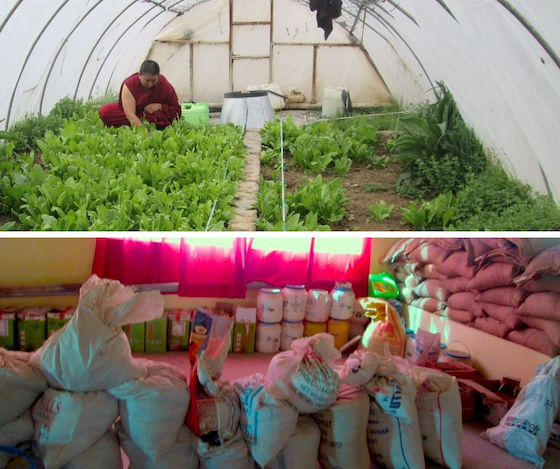
With the help of volunteers, the nuns have been able to set up three greenhouses where they mostly grow spinach. Before winter, the nuns must stock up rations of food and fuel.
Summer is the most important and busy season at the nunnery. The nuns must work hard in the fields and store firewood for the winter in addition to concentrating on their studies.
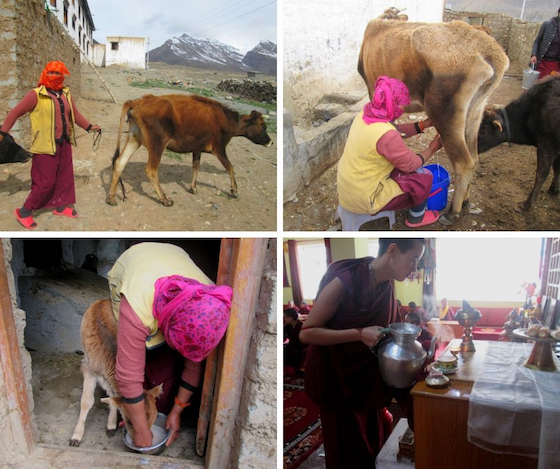
The nuns are very positive about their future and someday want to be able to serve as teachers back in their villages.
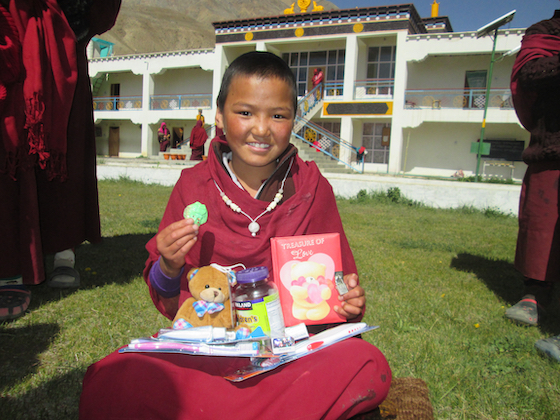
A Tibetan Buddhist nun at Sherab Choeling Nunnery holding gifts from her sponsor. We’d like to thank all our sponsors of nuns at Sherab Choeling for their support. We are always looking for more sponsors for nuns at the seven nunneries we support in northern India.
We’d like to thank all our sponsors of nuns at Sherab Choeling for their support. We still need more sponsors. To sponsor a nun please visit https://tnp.org/youcanhelp/sponsor/
Here is an audio recording of the nuns reciting the Lama Chopa or Guru Puja recorded in 2015 by the French photographer, Olivier Adam.

